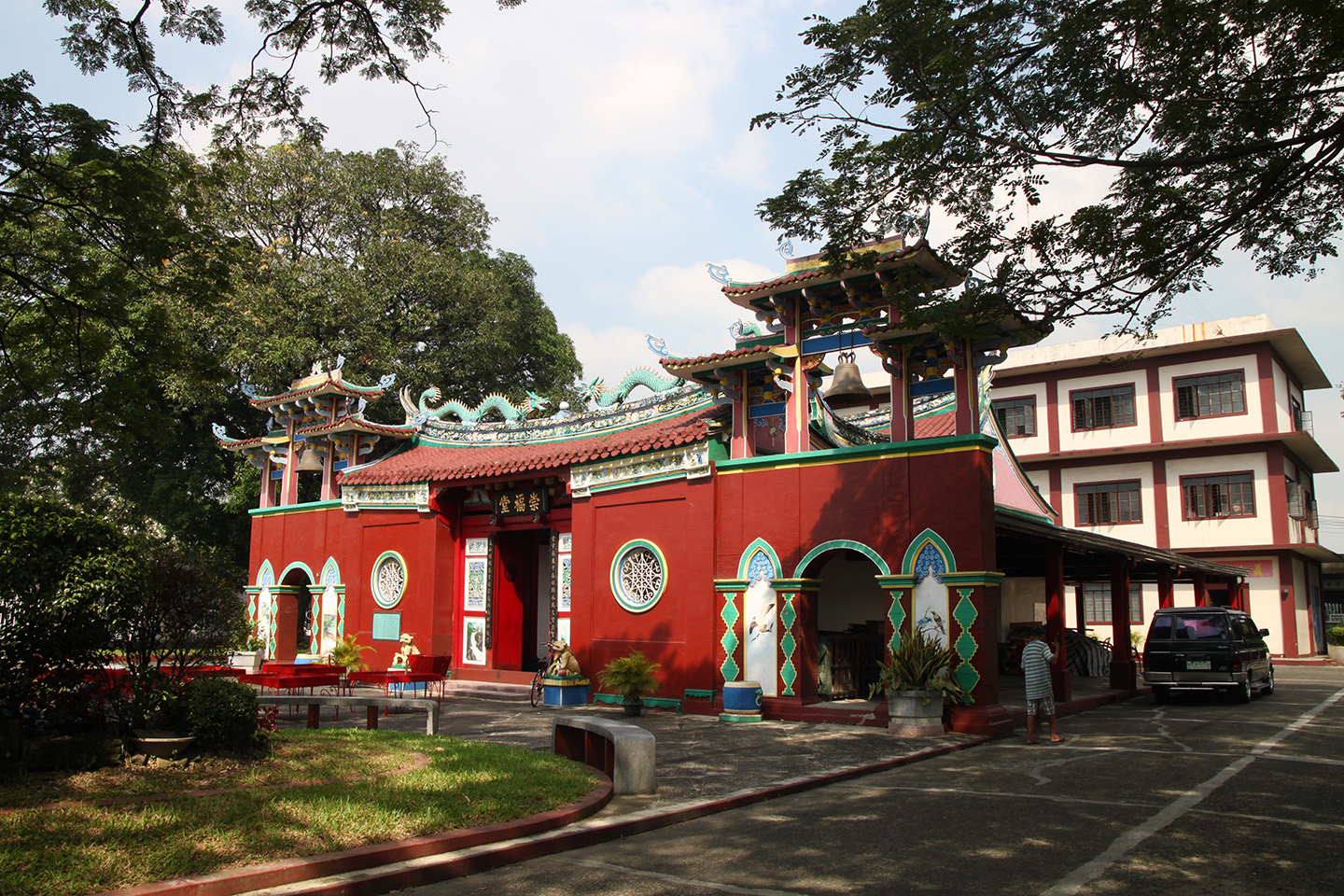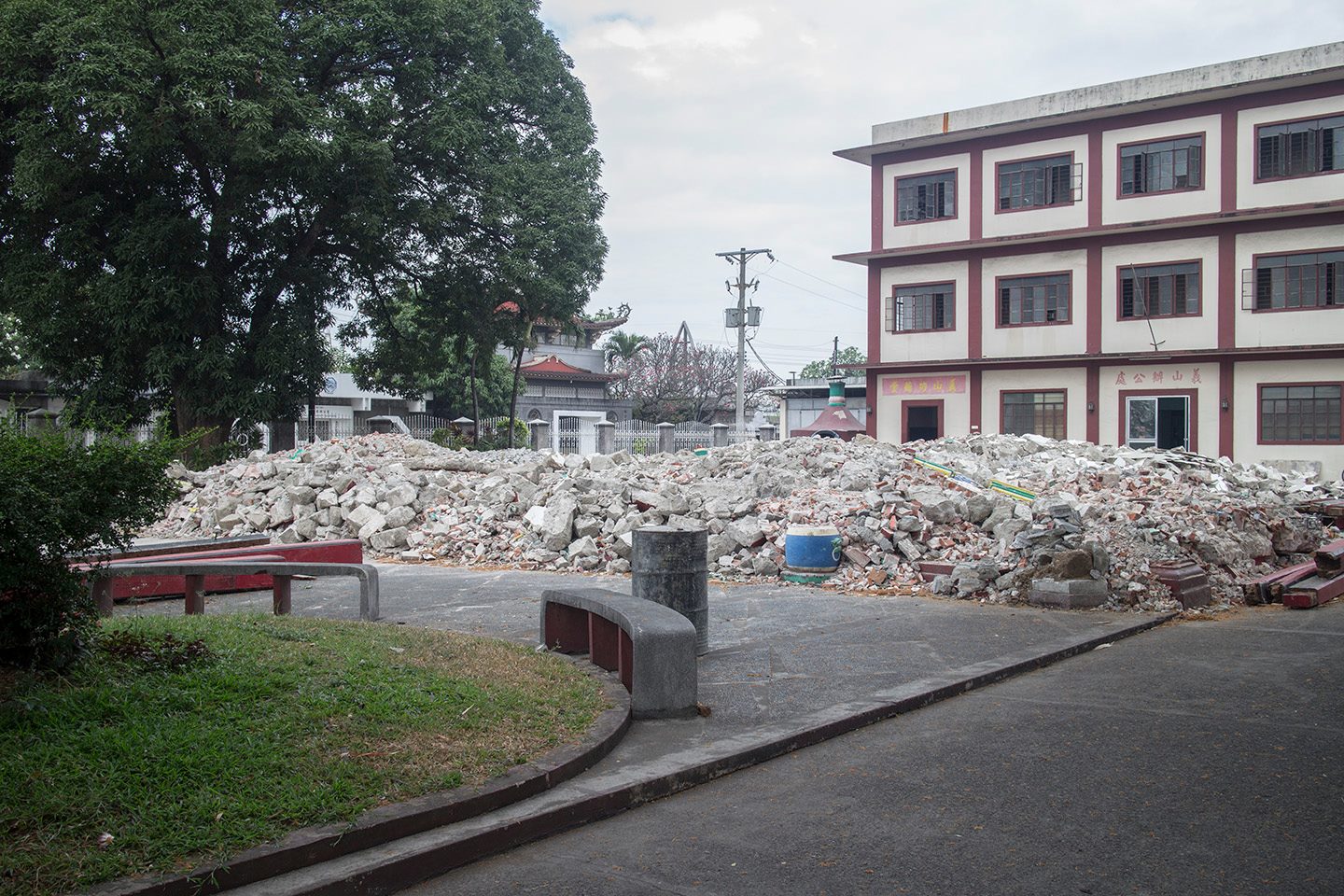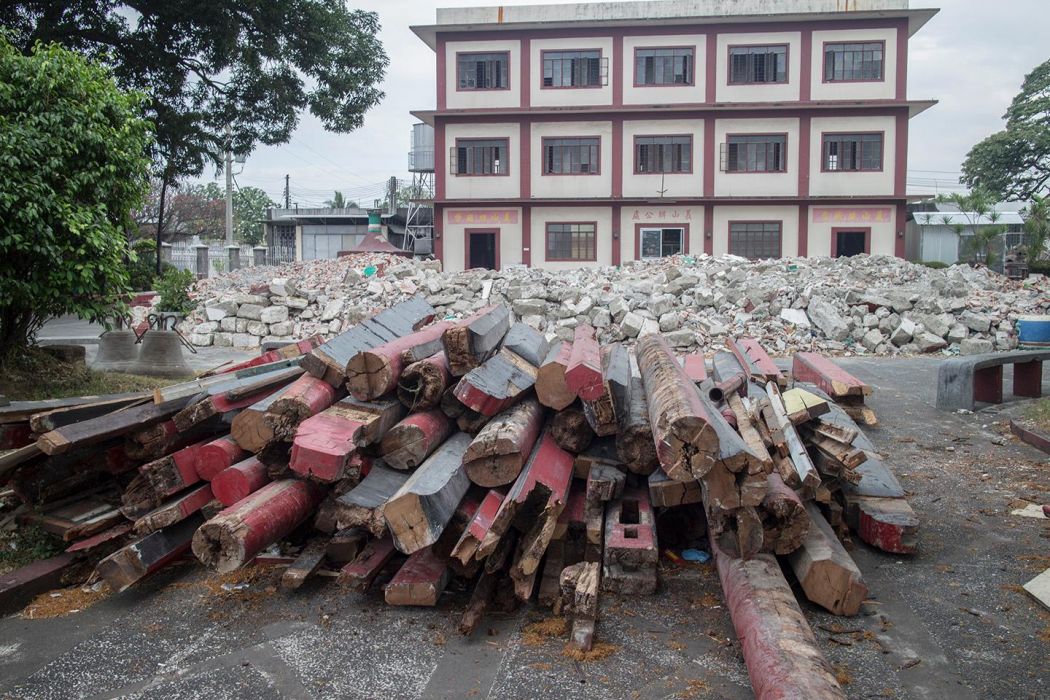A conservation group has issued a statement to Coconuts Manila regarding the demolition of the Manila’s oldest Chinese temple, which we reported yesterday.
“We are saddened to hear about the demolition of Manila’s oldest surviving Chinese temple at the Manila Chinese Cemetery and shocked at the level of ignorance regarding heritage conservation in the country,” says Heritage Conservation Society president Ivan Henares.
“Just because there were termites is not a valid reason to demolish the entire temple. Clearly there was a violation of RA10066. We will ask the NCCA or National Museum to issue a Compulsory Repair Order so that those responsible will be compelled to rebuild the temple to its original design & specifications,” he added.
Republic Act 100066, also called The National Heritage Act of 2009, was approved during the term of President Gloria Macapagal Arroyo.
The oldest Chinese temple in Manila was demolished on March 15, 2015 — caretakers at the Manila Chinese Cemetery, where the temple is located, told Coconuts Manila that the building had been infested with termites.
They also claimed to have been told by the Philippine Chinese Charitable Association, who manages the temple, that artisans and crafstmen from Taiwan will be flown in to build a similar temple in its place.
We have tried to get a statement from PCCA but have not recieved a reply from them as of press time.
Chong Hock Tong Temple, built in 1878, was one of the very few remaining pre-war structures in Manila. Closely associated with the Tsinoy community, it was never declared a historic landmark by the government.
Located inside the Manila Chinese Cemetery, it’s architecture has been described as “reminiscent of those in Fujian province as well as those in Singapore and Malaysia with their colorful friezes and uniquely upturned eaves.”



PHOTOS: Anson Yu
Despite that, it had some touches that made it distinctively Filipino: behind the display of various Buddhist images in the main altar, you could see in the background a row of Catholic images such as that of Jesus Christ and the Virgin Mary.
The images that used to be inside the temple have been stored inside a tin shed next to the cemetery’s administration building. Also in storage is the statue of Gobernadorcillio Carlos Palanca Tan Quien Sien, who has been credited for building the temple.
On Manila Nostalgia, a Facebook group with over 5,000 members from the Philippines and abroad, some users decried lack of respect for cultural artifacts. “I’ve seen that temple so many times since my grandparents are buried in that cemetery and we would visit each year,” wrote Vladimir See. “It’s still a desecration to tear down something like that in the phils where a late 19th century edifice is considered ‘old’ already,” chimed in Sandie Castro-Poblador.
“There is a tremendous anti-cultural heritage going on at present and it is very sad that monuments like this are being destroyed,” opines Virgilio Reyes. “Obviously, our policing powers are very weak and should be strengthened. The NCCA and the National Historical Commission should call an emergency meeting to address this.”





Reader Interactions